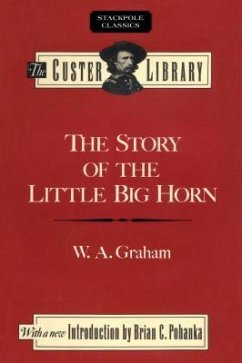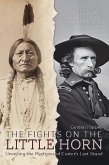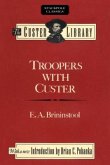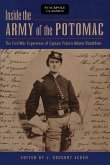In June 1876, General George A Custer was detailed to a column under General Alfred H. Terry. After being sent ahead of General George Crook at the Rosebud River, Custer and the Seventh Cavalry discovered a Souix encampment on June 25. Not realizing that he was far outnumbered, Custer divided his regiment into three sections, sending two, led by Major Marcus A. Reno and Captain Frederick W. Benteen, to attack upstream. Custer's section stayed to launch a frontal assault, and every man under Custer was killed. Soon after the massacre, Custer became a tragic hero in the eyes of the American public, and the event achieved an almost mythological reputation. It was not until fifty years later, however, that the first book-length history of the battle, The Story of the Little Big Horn, was published.








